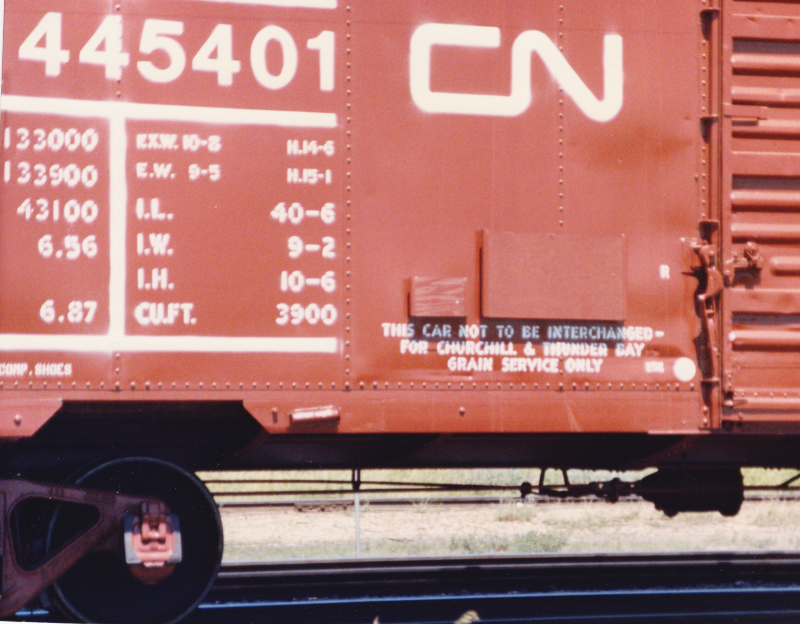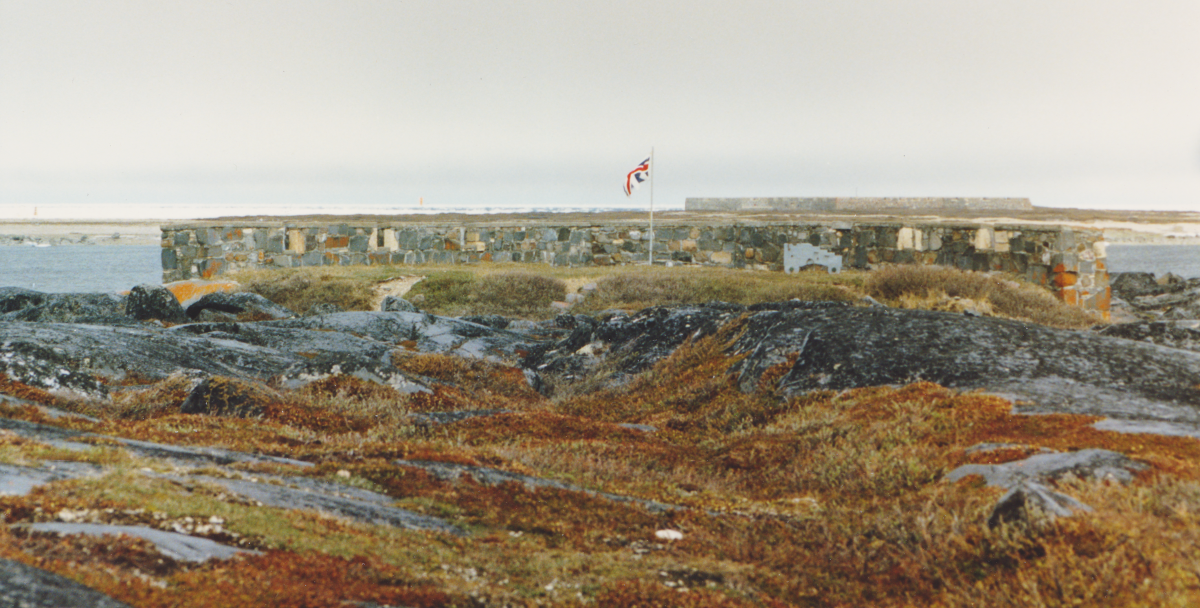A few days after our return from Churchill, Manitoba, a westbound of empties passes East Tower at Portage la Prairie.
* * *
A few days earlier ...
We had spent the day at Churchill - marked on this Google Map.
 |
| Official Guide, 1958. Collection of LC Gagnon |
Leaving from my aunt and uncle's at Portage, we had followed the usual route, which passes through Hudson Bay (Junction), Saskatchewan.
The reason for the railway line to Hudson Bay - the terminal elevator - lies between today's townsite ... and the original sites of settlement on the west side of the Churchill River. At one time this included Fort Prince of Wales.
Portage 1987, Second Section - to Churchill
At Churchill, our primarily American train-mates and we took took a local bus tour of Churchill which filled a good part of the day. Here, a Parks Canada interpreter recounts some of the history of Fort Prince of Wales and the English versus French battles over this strategic fur trading post on Hudson Bay.
The interpreter was in radio contact with other Parks employees who were keeping track of local polar bears. We were all cautioned to stay together in case a bear popped up unexpectedly. In many places in Canada, the first day of summer is not very warm.
It is entirely possible that our 'summer day' reminded some of our American fellow travellers of the Siege of Bastogne.
Here is the same bastion without people, and Fort Prince of Wales across the mouth of the Churchill River. It was possible to take a motor boat trip across to the fort, but it depended on tides and would have eaten up most of our day.
As the day progressed, the clouds withdrew. A gap in our tour continuity was created by people who had not eaten breakfast on the train. By the time the tour resumed, the sun was out. Here is the east side of the elevator. Ships dock on the far side.
This is taken from the southwest side of the elevator.
I think that is the elevator's original power plant with the stack.
Two Plymouth locomotives, built in June 1930, were used at the elevator.
In the afternoon, this is the shore east of Churchill.
Notice that the trees don't bother putting out branches on the northern side.
An undated postcard shows the loading equipment from the opposite end.
The Manitoba Hydro 1 megawatt diesel generator once used at Churchill for emergency power.
Here is a flanger from 1942 and a spreader from 1921.
Our passenger consist is reversing to the station.
TOFC cars will be added to our train before we depart.
The snow fighting equipment can be seen down the road at the right.
I think that is the elevator's original power plant with the stack.
Two Plymouth locomotives, built in June 1930, were used at the elevator.
In the afternoon, this is the shore east of Churchill.
Notice that the trees don't bother putting out branches on the northern side.
Our return south - with the same passenger consist - was scheduled for the early evening. After dinner, we wandered off and took a few photos of the elevator. This is on the river side, showing the grain loading conveyors.
Another undated postcard shows the elevator from the northeast side and near the location of my first elevator photo. You'll notice a number of wooden-sided boxcars here.
The Manitoba Hydro 1 megawatt diesel generator once used at Churchill for emergency power.
Here is a flanger from 1942 and a spreader from 1921.
Our passenger consist is reversing to the station.
TOFC cars will be added to our train before we depart.
The snow fighting equipment can be seen down the road at the right.
















